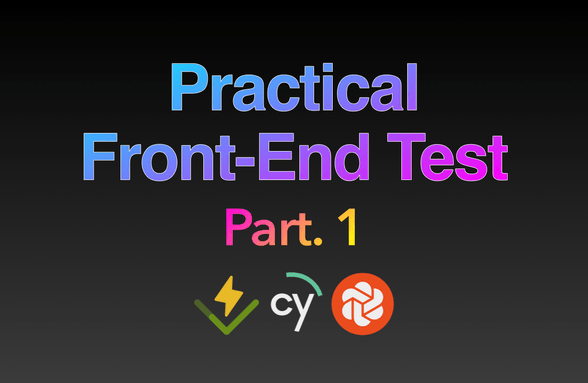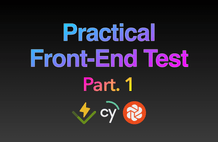・
Reviews 3
・
Average rating 4.7
I'm leaving this after listening to 60% of the first part. This is written from the perspective of a junior front-end developer who still has a lot to learn, so please refer to it as my personal opinion. I took off a star because I had more questions in my head than I felt like "I understand a little bit now!!" when I listened to it more than halfway through, but I think the instructor's teaching skills were good and the composition was good. Good points I liked the content that was neatly organized in the PPT screen. I liked that the code was well organized on github. I liked that the answers were quick and detailed. Disappointing points 1. It felt a bit like listening to a conference or seminar presentation rather than a lecture. I think it's because it's mainly about the PPT explanation? That might be why. I think it'll be more relatable to people in the field than job seekers. And the terms that popped out without explanation felt a bit difficult or too abstract. I know what you mean... I know it's good, but... um...?! 2. The lecture is in the format of PPT explanation => showing examples with code. Sometimes, I felt sorry that the contents explained in the PPT were not fully explained in the example code. For example, in the explanation of the integrated test, you emphasized that it is not good to do too much mocking and that it is better to minimize it, but the example code is all mocking (the fate of the front end..?) Hmm... Now, please tell me how to do less mockingㅠ 3. This lecture takes up a lot of the explanation of the contents organized in the PPT and does not explain in detail how to use the testing library while typing the code step by step. I think it would be good to try the react testing library or vitest separately before watching the lecture.
Hello! This is Off. I'm sorry that you have more questions ㅠㅠ I sympathize with the part you wrote as regretful, and I will definitely consider and apply that part in the next lecture. If you have any additional questions, please feel free to ask and I will answer them all as quickly as possible! Rather than moving on with curiosity, I think it would be better to think about it together and solve it. I think it would be good to add a little more explanation and excuse(?) regarding the regrettable points. ㅎㅎ 2. Regarding the part about mocking! The rule that "It is good to minimize mocking" applies to the first and second parts of the lecture, and as the E2E test progresses, the amount of mocking applied to the test decreases significantly. ㅎㅎ Through this, we will talk about the reliability that can be obtained for each test. As you mentioned, it may be the fate of the front..?, but since a single app itself is not just FE itself but also runs in various development scopes, there are parts where mocking is inevitable. Also, it seems to vary depending on how you view the test unit. When we say that minimizing is good, we did not mean that we should not use it. However, we meant that it is good to write it only in the parts that are really necessary. ㅎㅎ It would be good to think about things like, "Even if we mock this part, the reliability of this app (module, test unit) is sufficiently verified to the point that it operates correctly." As for the content limited to integration testing, when you actually write multiple complex integration tests, you often use mocking because of the inconvenience and inconvenience at the time even though you can write the test without mocking. In this case, it may be difficult to greatly enjoy the effect of a complete integration test as explained in the lecture. (In this case, it may have been a little awkward, but it may have been a little more helpful for the explanation to create the worst mocking(?) mistake situation and make it the current state.) Therefore, we divided the test units according to our standards and applied the minimum mocking within that scope. If there is unnecessary mocking in the lecture (of course, there may be!), it would be better if you gave us your opinion. 3. I will try to write this part by adding a little more to the comments you gave. If the lecture is too long, I think we won't be able to convey the types of tests, purposes, limitations, and how to apply them, so you might feel that way because we removed all of those parts. ㅠㅠ (This part may vary depending on your personal development learning style!) Nevertheless, the lecture covers the settings for each test, the core philosophy of each test, and the basic code used. This is my personal opinion, but rather than studying the target development stack without knowing anything, I think it's better to study the core philosophies together and then find and study the parts you lack, even if it's a little difficult to understand. In the lecture, there is a part where it says, "You can understand it more deeply by reading some parts of the guide document." Please take note of these parts before continuing the lecture. ㅎㅎ In addition, we have included example test codes for all parts that are not introduced in the lecture, as well as the codes used in the lecture. If you study while looking at this part together, I think you will learn much faster and more practical parts than if you study alone. I think I wrote too much, but I want to emphasize it again that I 100% agree with what you said and I will do my best to answer any shortcomings so that you do not have difficulties in studying. Thank you for your good opinion and I wish you a happy new year~







